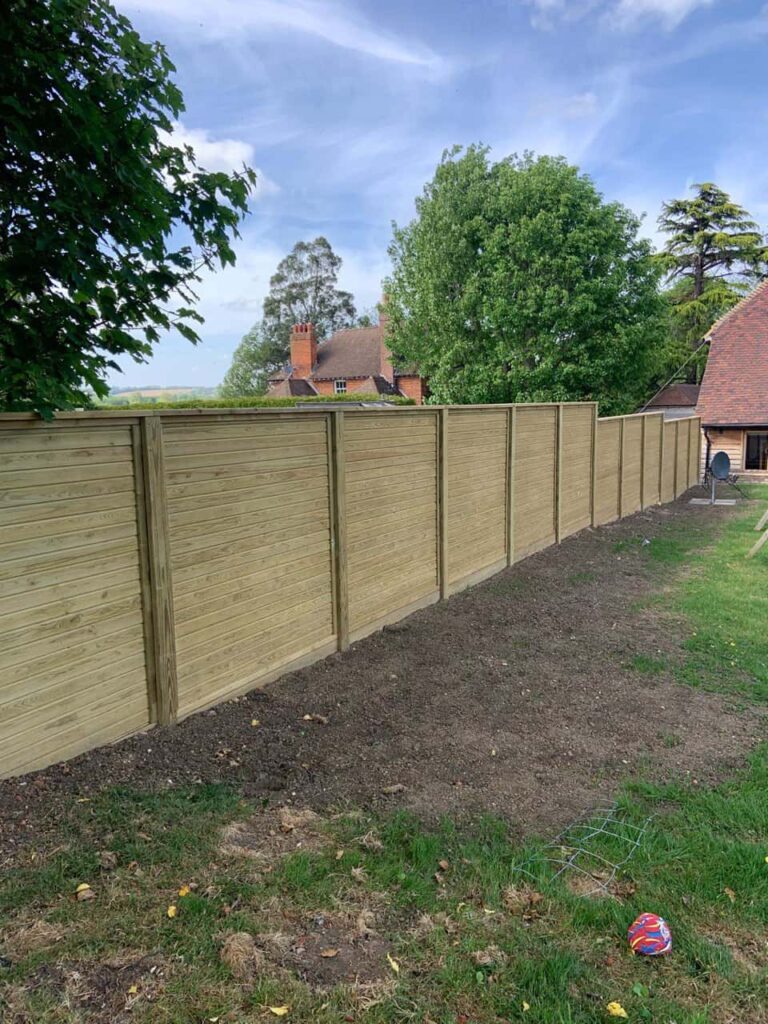How to Prevent Your Post and Rail Fence from Leaning Over Time
Introduction
A post and rail fence is a durable and attractive option for defining boundaries, securing livestock, or enhancing a property’s aesthetic appeal. However, like any outdoor structure, it is exposed to weather, soil movement, and general wear, which can cause it to lean over time. Once a fence starts to tilt, it not only loses its visual appeal but also becomes less effective and more vulnerable to further damage.
At Fast Fix Fencing Bury St Edmunds, we provide expert fencing solutions in Bury St Edmunds, Suffolk, ensuring that fences remain strong and secure for years to come. In this article, we will explore the key factors that contribute to fence leaning and provide practical tips to prevent it, helping you maintain a sturdy and reliable post and rail fence.
Key Takeaways
- Proper fence post installation is crucial for long-term stability.
- High-quality materials help resist weather damage and soil movement.
- Regular maintenance can prevent leaning and extend the lifespan of your fence.
- Drainage solutions reduce water damage and soil shifting.
- Professional installation ensures a strong, long-lasting fence structure.
Causes of Fence Leaning
Weak or Improperly Installed Fence Posts
Fence posts provide the structural foundation for any post and rail fence. If they are not set deep enough into the ground or lack proper reinforcement, they can become unstable over time. This is particularly common in areas with soft or shifting soil.
To prevent leaning, posts should be buried at least one-third of their total height, ideally in concrete for maximum stability. Proper spacing between posts also plays a role in maintaining balance and reducing pressure on each section of the fence.
Soil Erosion and Ground Movement
Changes in the soil, particularly due to erosion, can weaken the base of your fence posts. Heavy rain, flooding, or even natural soil settling can cause posts to shift, leading to instability. In areas prone to frequent moisture exposure, ensuring proper drainage around your fence line is essential.
Gravel or crushed stone at the base of fence posts can help improve drainage and minimise soil washout. Additionally, planting grass or shrubs along the fence line can help stabilise the soil and reduce erosion.
Weather Damage and Rotting
Timber fences are highly susceptible to weather damage, particularly in areas with heavy rainfall or fluctuating temperatures. Moisture can lead to rotting posts, while strong winds can gradually push the fence off balance. Sun exposure can also cause wood to dry out and weaken over time.
Using pressure-treated timber can significantly extend the life of your fence, as it offers better resistance to moisture and decay. Applying a protective sealant annually further protects the wood from harsh weather conditions.
Preventative Measures for a Strong Fence
Ensuring Proper Post Installation
One of the most effective ways to prevent a fence from leaning is by setting posts correctly from the start. Fence posts should be installed at least 60 cm (24 inches) deep, or deeper in softer soil. Using concrete to secure each post creates a solid foundation that resists movement.
For added stability, consider angling the concrete slightly at the top to direct water away from the post base. This prevents pooling water, reducing the risk of rot and erosion.
Using High-Quality Materials
The quality of your fence materials has a significant impact on its longevity. Investing in high-quality, pressure-treated timber ensures better resistance to moisture and pests. If using metal fastenings, opt for galvanised or stainless steel options to prevent rust and deterioration.
At Fast Fix Fencing Bury St Edmunds, we use only durable materials suited for the climate and soil conditions in Bury St Edmunds, Suffolk, ensuring that fences remain strong and secure for years to come.
Regular Maintenance and Repairs
Routine fence maintenance can prevent minor issues from turning into major structural problems. Inspect your fence at least twice a year for signs of leaning, loose posts, or rotting wood. Tighten any loose rails, replace damaged posts, and reapply protective treatments as needed.
Trimming vegetation around the fence also helps by preventing excess moisture build-up and reducing pressure from overgrown plants or tree roots.
Managing Water Drainage
Poor drainage can accelerate soil erosion and weaken fence posts. If water tends to collect around the base of your fence, consider installing a drainage system to direct excess moisture away. French drains, gravel backfilling, or strategically placed trenches can all help improve water flow and protect your fence.
Conclusion
A well-built post and rail fence adds functionality and charm to any property, but without proper installation and maintenance, it can start to lean over time. Factors like weak post foundations, soil erosion, and weather damage all contribute to fence instability, making preventative measures essential.
By ensuring deep, secure post installation, using high-quality materials, and maintaining proper drainage, you can extend the lifespan of your fence and keep it standing strong. If you need expert fencing installation or repair in Bury St Edmunds, Suffolk, Fast Fix Fencing Bury St Edmunds is here to help. Contact us today for professional, reliable fencing solutions.
Call us on: 01284 339 596
Click here to find out more about Fast Fix Fencing Bury St Edmunds
Click here to complete our contact form and see how we can help with your fencing needs.

